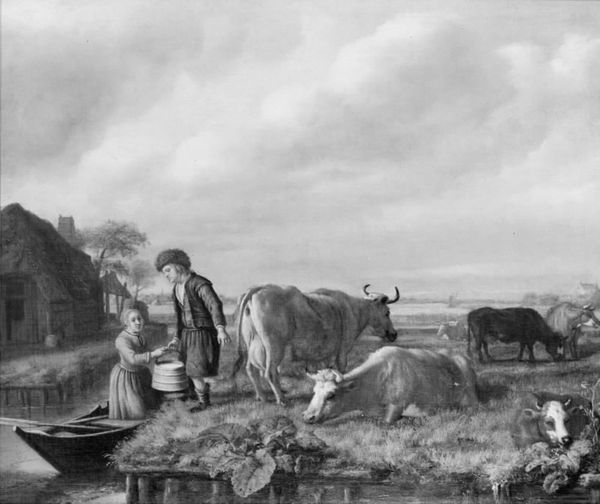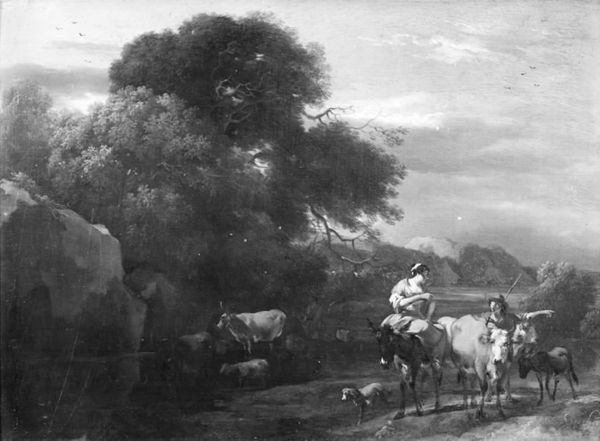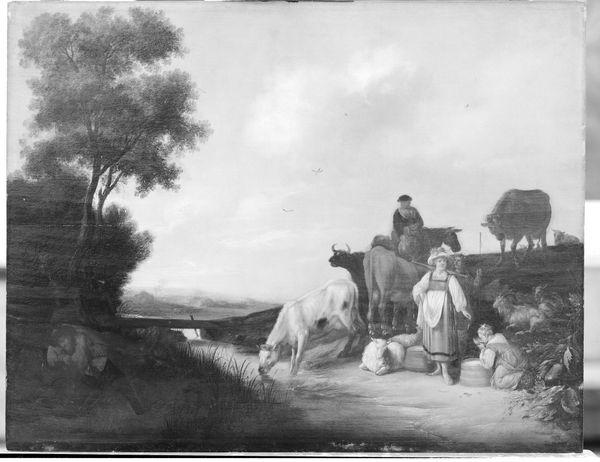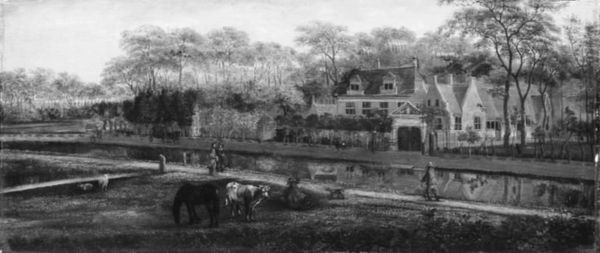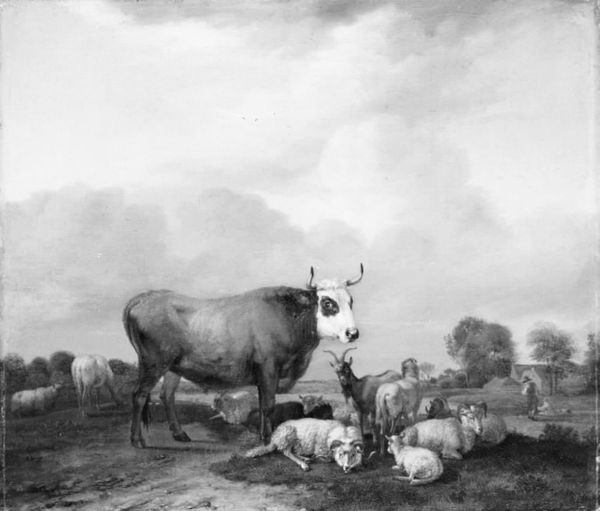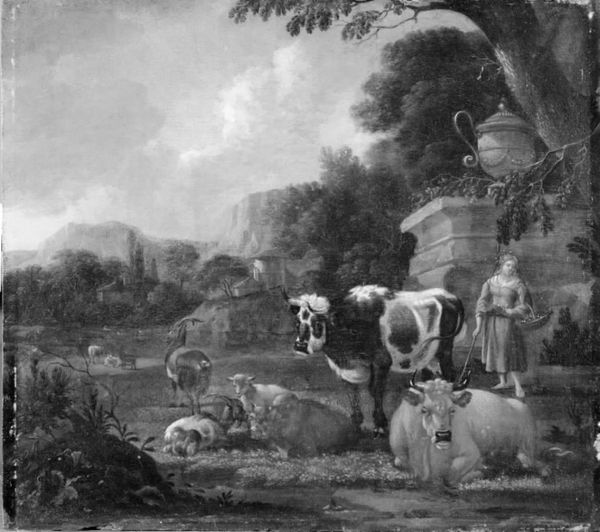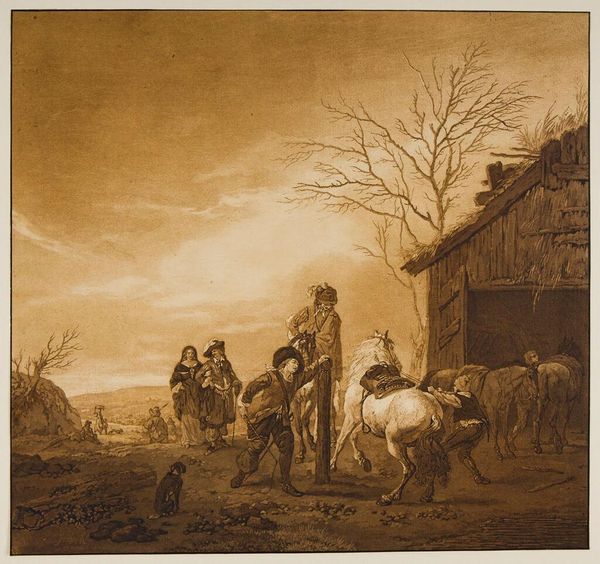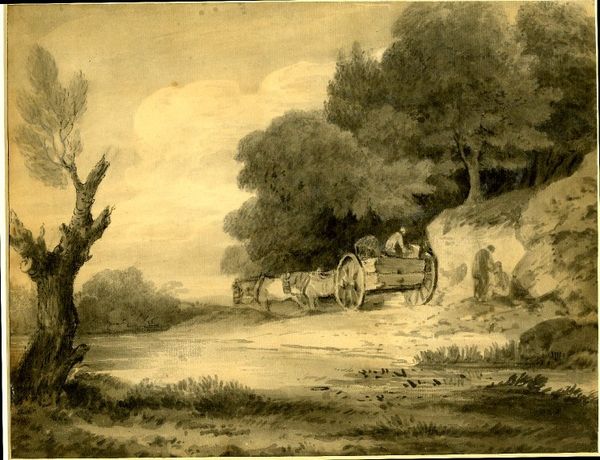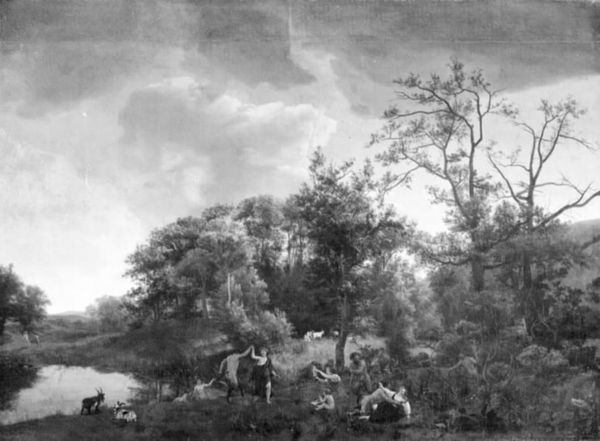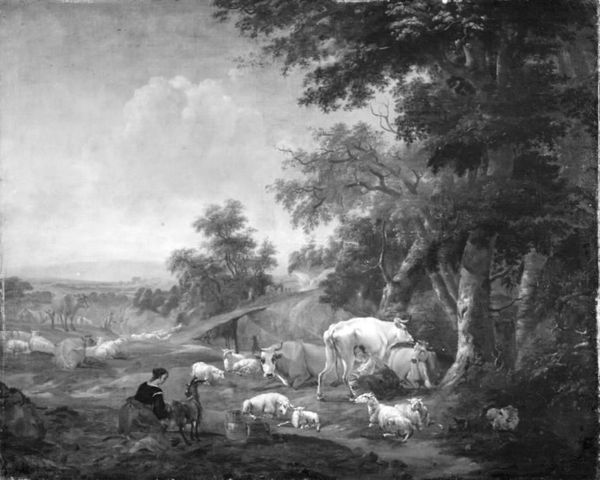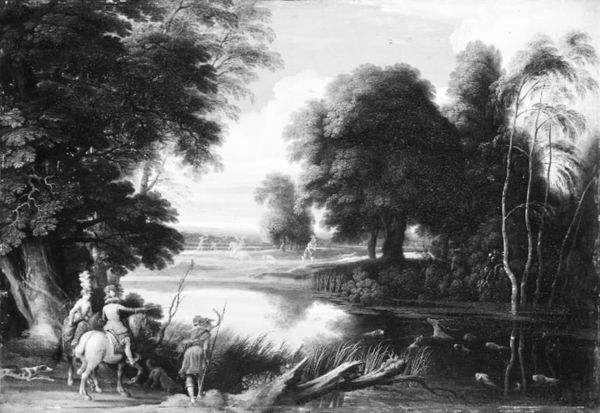
painting, canvas
#
dutch-golden-age
#
painting
#
sculpture
#
landscape
#
rural
#
black and white format
#
canvas
#
black and white
#
genre-painting
#
monochrome
#
realism
#
monochrome
Dimensions: 72 cm (height) x 91 cm (width) (Netto)
Curator: Jan Victors, painted this genre scene, “Scene outside a Dutch Farm,” around 1650. The artwork presents a tableau of rural life during the Dutch Golden Age. Editor: The composition strikes me immediately; despite its grayscale palette, it feels bustling and full. The arrangement of figures and structures guides the eye, doesn't it? The texture is intriguing, appearing both precise and free in different areas. Curator: Precisely. Consider how the composition anchors us with the strong verticals of the buildings and figures. And look how the artist positions the cow and boat nearly at the exact center to draw viewers in, all reflecting very specific attitudes to art production at that time. The cow dominates the frame with that strong mouth expression, which almost has to have a meaning we are missing. Editor: Indeed. But its monochramatic nature really makes me question that sense of ‘realism’ of the image – isn’t that black and white format very far from capturing a truly realistic genre scene, such as this? Curator: One must interpret these pieces considering the socio-historical context of its creation. Artists would likely capture an original subject on a single-color artwork, with later colorful adjustments in a second time. Many of them wouldn’t have the time nor budget to dedicate their whole life into perfecting single colorful pieces of this sort. We also know it has been oil on canvas originally. So, as we can still appreciate how monochrome it may be today, the use of color may have changed across the centuries due to deterioration, perhaps. Editor: I wonder about its original viewing context too. Was this intended for public display, meant to be reproduced and distributed widely, or would it have existed to signal particular attributes amongst privileged social classes? Curator: Knowing Dutch painting from this period, these were very rarely commissioned art; more like objects produced within a highly competitive artistic environment and then offered up in town fairs to try and catch customers, who wanted to reproduce, for example, popular realistic events to better capture the sense of the beauty around them. And, well, this still has great success in modern settings. Editor: Absolutely, as the geometric patterns within the boat are quite striking and continue to captivate us today. What an era and style indeed. Curator: What a painting indeed; these monochrome and apparently-casual moments in time conceal deeper historical perspectives for all of us.
Comments
No comments
Be the first to comment and join the conversation on the ultimate creative platform.

